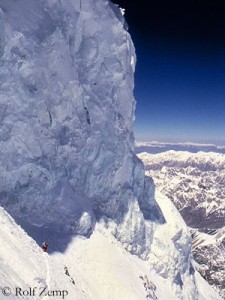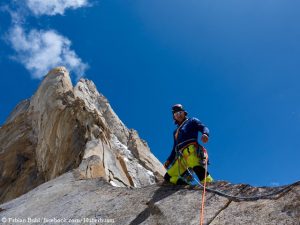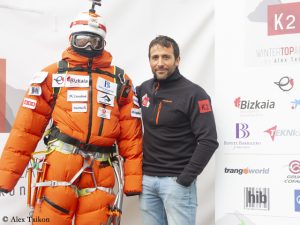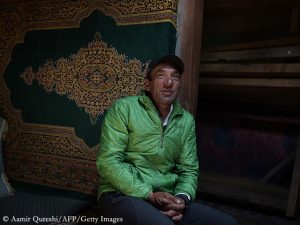Heavy rush on the “King of the Eight-thousanders”
If I were a road planner, I would say: This smells like traffic jam. More than 100 climbers from eight expeditions have signed this summer for K 2, with a height of 8,611 meters the second highest mountain on earth. The Base Camp at the foot of the “King of the Eight-thousanders” could become crowded, as well as the normal route on the mountain. Even the team of the Nepalese expedition operator Seven Summit Treks consists of 44 (!) climbers.
Necessary arrangements
Similar to Mount Everest, the teams will have no choice but to “manage” the mountain, that is to coordinate their climbs to avoid jams on the dangerous key points on the route. The accident in 2008 should be warning enough. At that time, eleven climbers died in the summit area of K 2 within two days, six of them in ice avalanches. One of the reasons: Too many people were climbing simultaneously in the “Bottleneck”, a gully at 8,300 meters, extremely exposed to avalanches. In that season, “only” about 70 climbers tried to scale K 2, much less than this year. So far, around 350 climbers have reached the summit of K 2, which is considered one of the most beautiful but also most challenging and dangerous eight-thousanders. About 80 climbers have lost their lives on “Chogori”, as the local Balti call the mountain.
Record in 2004
The summer of 2004 (when I visited K 2 Base Camp too) was so far the season with the most summit successes. In that year, the Golden Jubilee of the first ascent of K2 was celebrated. 51 climbers reached the highest point at that time. This record was only narrowly missed in 2014, with 48 summit successes. It was noteworthy then that 32 climbers reached the summit in a single day (26 July). 2015 was once again a year without any summit success on K 2.
More and more Sherpas from Nepal
Many of this summer’s expeditions will employ Climbing Sherpas from Nepal. Pakistani Muhammad Ali “Sadpara” – one of the climbers who first scaled Nanga Parbat in winter last February – complained that Nepalese Sherpas “already got 80 percent of business in Pakistan, and will be 100 percent soon. At the same time, many friends of mine spend all year at home, eating plain rice, waiting for a call that won’t arrive unless they don´t change their behaviour.”










